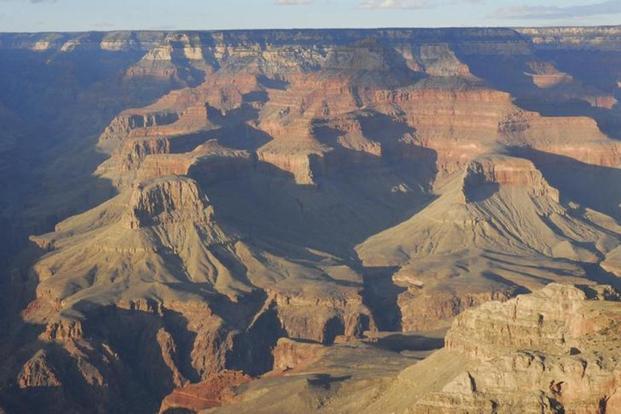Heavy rains may have shaped Mars surface: study
Thu 18 May 2017, 13:33:01

Heavy rain on Mars may have reshaped the red planet's impact craters and carved out river-like channels on its surface billions of years ago, a new study has found.
Changes in the atmosphere on Mars made it rain harder and harder, which had a similar effect on the planet's surface as seen on Earth, scientists said.
The fourth planet from the Sun, Mars has geological features like the Earth and Moon, such as craters and valleys, many of which were formed through rainfall. Although there is a growing body of evidence that there was once water on Mars, it does not rain there today.
In the new study, Robert Craddock and Ralph Lorenz from Johns Hopkins University in the US show that there was rainfall in the past - and that it was heavy enough to change the planet's surface.
Valley networks on Mars show evidence for surface runoff driven by rainfall."Many people have analysed the nature of rainfall on the Earth, but no one had thought to apply the physics to understanding the early Martian atmosphere," said Craddock.
To understand how rainfall on Mars changed over time, the researchers had to consider how its atmosphere has changed.When Mars first formed 4.5 billion years ago, it had a much more substantial atmosphere with a higher pressure than it does now. This pressure influences the size of the raindrops and how hard they fall.
Early on in the planet's existence, water droplets would have been very small, producing something like fog rather than rain; this would not have been capable of
carving out the planet we know today.
carving out the planet we know today.
As the atmospheric pressure decreased over millions of years, raindrops got bigger and rainfall became heavy enough to cut into the soil and start to alter the craters.
The water could then be channelled and able to cut through the planet's surface, creating valleys."By using basic physical principles to understand the relationship between the atmosphere, raindrop size and rainfall intensity, we have shown that Mars would have seen some pretty big raindrops that would have been able to make more drastic changes to the surface than the earlier fog-like droplets," said Lorenz.
Researchers showed that very early on, the atmospheric pressure on Mars would have been about 4 bars (the Earth's surface today is 1 bar) and the raindrops at this pressure could not have been bigger than three millimetres across, which would not have penetrated the soil.
As the atmospheric pressure fell to 1.5 bars, the droplets could grow and fall harder, cutting into the soil.
In Martian conditions at that time, had the pressure been the same as we have on Earth, raindrops would have been about 7.3 millimetres - a millimetre bigger than on Earth.
"It's unlikely that rainfall on early Mars would have been dramatically different than what's described in our paper. Our findings provide new, more definitive, constraints about the history of water and the climate on Mars," said Craddock.
The study was published in the journal Icarus.
No Comments For This Post, Be first to write a Comment.
Most viewed from Specials
Most viewed from World
AIMIM News
Latest Urdu News
Most Viewed
May 26, 2020
Do you think Canada-India relations will improve under New PM Mark Carney?
Latest Videos View All
Like Us
Home
About Us
Advertise With Us
All Polls
Epaper Archives
Privacy Policy
Contact Us
Download Etemaad App
© 2025 Etemaad Daily News, All Rights Reserved.













.jpg)
.jpg)
.jpg)
.jpg)
.jpg)
.jpg)
.jpg)
.jpg)
.jpg)




















